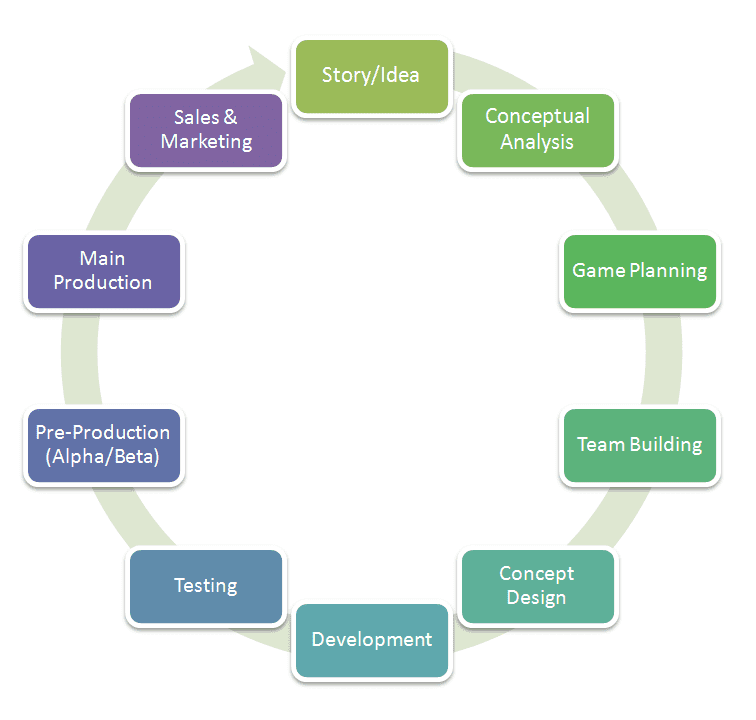The game development process involves five stages: conceptualization, pre-production, production, testing, and release. The conceptualization stage involves brainstorming and defining the game’s idea, goals, target audience, and creating a prototype. The pre-production phase outlines specific game details, such as level design, character development, and game objects, and starts with a comprehensive game design document. The production stage is the most extensive, involving coding, visual design, animation, 3D modeling, and sound design. Testing ensures that the game is polished, free of bugs and has excellent functionality and user experience. The release phase involves creating marketing strategies, launching the game in desired app stores, and offering post-sale support and updates.
Introduction:
Game Development is a complex process that requires planning, creativity, coding skills, and rigorous testing. Moreover, it is not only limited to creating a visually appealing product but involves a complete package of all features, including graphics, sound, music, and programming.
From Scratch to Release: The Game Development Lifecycle is a complete process that involves five fundamentals stages. These stages include Conceptualization, Pre-Production, Production, Testing, and Release. Each stage is significant, and the entire process needs to be completed efficiently for the successful launch of a game.
Conceptualization:
This is the initial stage where game developers brainstorm the overall concept of the game. The conceptualization stage focuses on creating the idea, setting the goals, and defining the target audience. It involves research about the competition and market trends. In this stage, game developers also create a prototype of the game, outlining the core gameplay mechanisms, and defining the game’s style.
Pre-Production:
Once the initial concept of the game is defined, developers move on to Pre-Production. This stage outlines the specifics of the game, such as level design, character development, storyboards, 2D/3D art concepts, and game objects. Developers create mockups and sketches for backgrounds, objects, and characters. The pre-production phase starts with creating the game design document (GDD), a comprehensive document that outlines the game’s mechanics, levels, characters, storyline, and objectives.
Production:
The production stage is the most extensive phase of game development, where game developers code the game’s functionality and develop the visual design. In this stage, game developers use game engines, tools, and software to develop the game. The production phase also includes animation, 3D modeling, and sound design. This stage of the game development lifecycle involves constant testing, debugging, and iterating.
Testing:
The testing phase comes after the development process to ensure that the game is polished and free of bugs. In this stage, game developers test the game functionality, compatibility, load times, crash rates, and overall quality. Game testers also assess the gameplay and user experience, providing feedback for the developer to improve the game’s quality.
Release:
The final stage of the game development lifecycle is the Release stage, where the game is launched in the market. In this stage, game developers create marketing strategies, trailers, teasers, and a press kit. Furthermore, game developers prepare for the launch date by submitting the game in the desired app stores, including Google Play, App Store, or Steam. Once the game is launched, game developers offer post-sale support and updates as required.
Conclusion:
Game development is a complex process, and From Scratch to Release: The Game Development Lifecycle outlines the complete process effectively. Each stage plays a crucial role in delivering an excellent game. For example, conceptualization helps developers create a solid foundation, pre-production helps define the specifics, production brings the game to life, testing improves the game quality, and the release stage brings the game to the market. Working through all these stages meticulously and efficiently can undoubtedly lead to a successful game launch.
